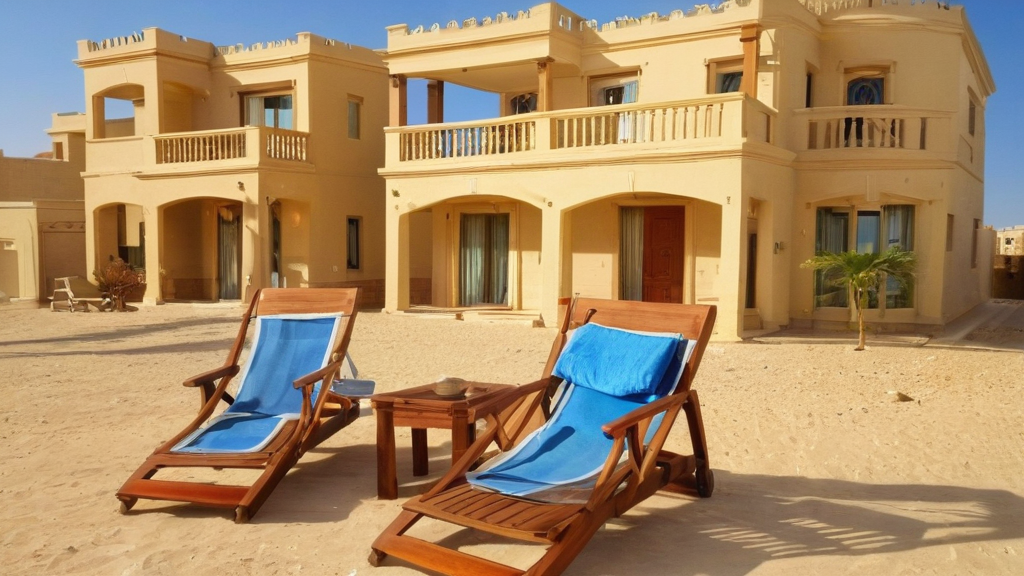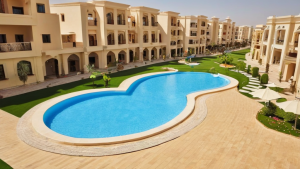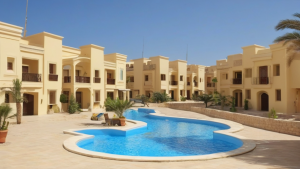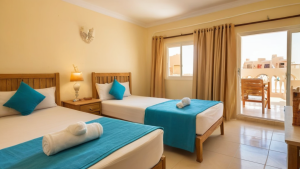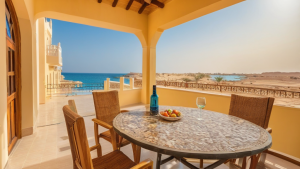Summary about owning and buying property in Hurghada, Egypt.
- When considering whether to invest in new builds or existing homes, many buyers are drawn to new constructions for several compelling reasons.
- New builds offer modern designs, energy-efficient features, and the appeal of a blank canvas where you can customize finishes and layouts to suit your taste.
- To decide whether you should invest in a new build or an existing home, consider the following aspects carefully.
- On the flip side, while existing homes may be less expensive initially, they might require unexpected repairs or upgrades that add to the total cost.
- If proximity to schools, workplaces, or urban centers is a priority, existing homes might offer a strategic advantage.
Should you invest in new builds or existing homes? key factors to consider
Understanding the appeal of new builds
When considering whether to invest in new builds or existing homes, many buyers are drawn to new constructions for several compelling reasons. New builds offer modern designs, energy-efficient features, and the appeal of a blank canvas where you can customize finishes and layouts to suit your taste. These homes often comply with up-to-date building codes, which means enhanced safety and lower maintenance costs initially. You also benefit from warranties provided by developers, which can cover structural issues and appliances for several years.
Another strong advantage is the potential for technologically advanced elements such as smart-home systems, new heating and cooling solutions, and superior insulation materials. These factors contribute to long-term savings on utilities and a more comfortable living environment. Plus, new developments are frequently situated in growing neighborhoods, offering additional investment potential as infrastructure and amenities improve over time.
Advantages of existing homes to consider
On the other hand, existing homes come with their own unique set of benefits that can be attractive to investors and homeowners alike. One primary advantage is location. Established neighborhoods often have convenient access to mature trees, schools, parks, and public transportation, features that new developments may not yet offer. Lifetime community connections and charm often accompany older neighborhoods, providing a sense of belonging that new builds sometimes lack.
Existing homes usually display architectural character and detail that can be hard to find in new constructions. For some buyers, this aesthetic value adds emotional appeal. Moreover, buying an existing home might present opportunities for immediate price negotiation since sellers may be motivated, depending on market conditions. Cost-wise, these properties can sometimes be more affordable upfront, allowing room to invest in desired renovations gradually rather than paying a premium for new features.
Key factors influencing your decision
To decide whether you should invest in a new build or an existing home, consider the following aspects carefully:
- Budget: New builds often come at a premium price because of their brand-new fixtures and modern amenities. On the flip side, while existing homes may be less expensive initially, they might require unexpected repairs or upgrades that add to the total cost.
- Maintenance: New builds usually mean fewer maintenance headaches during the first several years due to everything being brand new. Existing homes could demand more upkeep, especially if they have older plumbing, electrical systems, or roofs.
- Customization: With new homes, you have the chance to tailor design aspects before moving in, such as choosing floor plans, appliances, and finishes. Existing homes might require remodeling to achieve your perfect look and functionality.
- Location: If proximity to schools, workplaces, or urban centers is a priority, existing homes might offer a strategic advantage. New developments are often located on the outskirts but can increase in value as the area develops.
- Investment Growth: Consider how market trends affect your potential equity gains. Established areas with steady demand might see stable appreciation, while new builds in growth corridors could offer higher returns but with greater risk.
- Environmental Impact: New constructions tend to incorporate more sustainable materials and energy-efficient infrastructure, contributing to reduced environmental footprints compared to older homes that may require extensive energy upgrades.
Risks and rewards in both choices
Choosing between new builds and existing homes requires balancing risks and rewards. With new builds, there’s the risk of potential construction delays or issues that aren’t immediately apparent. You might also face ongoing development disruptions in the neighborhood for some time. Conversely, existing homes carry the risk of hidden problems such as foundation damage, outdated wiring, or mold, which could demand costly fixes down the line.
On the reward side, new builds provide certainty regarding the home’s condition and often come with designed-in modern conveniences, reducing unexpected expenses immediately after purchase. Existing homes can offer a strong sense of community and sometimes better initial pricing, which may provide flexibility for personalized renovations that increase value over time.
How to align your investment with your goals
Your personal priorities should guide your choice. If you value move-in readiness, low initial maintenance, and modern features, investing in new builds might suit you. However, if you prefer character, established neighborhoods, and the opportunity to increase value through renovations, an existing home could be preferable.
Additionally, consider your investment time horizon. New builds may appreciate rapidly in emerging areas, making them attractive for short to medium-term investment. Existing homes in well-established locations might provide steadier growth and less volatility, appealing for long-term holding.
Financing and incentives
Financing options can also impact your decision. Some lenders offer specialized loans for new constructions, sometimes with incentives such as lower interest rates or reduced closing costs. Government programs occasionally provide grants or tax rebates for purchasing newly built energy-efficient homes, which can offset the higher upfront price.
Existing homes may benefit from different types of assistance, particularly if they qualify as historical properties or if you intend to implement eco-friendly renovations post-purchase. Understanding these financial nuances can increase the overall value and affordability of your investment.
Weighing the benefits and drawbacks of new builds versus existing homes requires careful analysis of your personal needs, financial goals, and lifestyle preferences. By thoroughly evaluating key factors such as budget, location, maintenance, and growth potential, you can make an informed decision that aligns with your vision for the future.
Comparing long-term benefits and risks of new builds versus existing homes investment
Evaluating the appeal of new build properties
When you consider investing in real estate, new build homes often catch the eye for their fresh appeal. These properties come with modern designs, contemporary layouts, and the latest building materials. One of the biggest draws is the minimal maintenance required initially. Since everything is brand new, from the roof to the plumbing and insulation, you can expect fewer repairs in the early years. Additionally, new homes usually boast energy-efficient features such as enhanced insulation, double-glazed windows, and energy-saving heating systems, which can reduce utility costs over time.
Investing in new builds often means benefiting from warranties provided by developers. These warranties cover major structural elements and can offer peace of mind for up to ten years, protecting your investment against unexpected defects. New builds also let you customize certain design features or finishes, which can make the property more attractive to future buyers or renters. These homes are typically located in growing neighborhoods with planned community amenities, adding potential for property value appreciation.
However, new builds can come with a higher price tag compared to older, established homes. The initial cost might be steep as builders factor in modern construction techniques, premium materials, and the latest technology. Sometimes, these properties are situated in areas still under development, which might mean fewer local amenities or less established infrastructure nearby. This could affect the immediate rental appeal or resale value until the area matures.
Long-term benefits of existing homes
Existing homes bring their own set of advantages that appeal to many investors. One of the key benefits is location. Older homes are often found in well-established neighborhoods offering mature landscaping, local schools, shops, and public transport options already in place. This makes these properties immediately attractive to potential tenants or buyers looking for convenience and community.
Prices on existing homes can sometimes be more negotiable, especially if the property needs some renovation or updating. This brings in the opportunity to add value by making improvements and thus increase the long-term return on investment. Many savvy investors look for homes with "good bones" , solid structure but outdated interiors , knowing they can boost the value through upgrades.
Another benefit is that the market history of an existing home provides insights into how the property and neighborhood have appreciated over time. This historical data allows investors to make more informed predictions about future value increases.
However, existing homes come with risks too. Older properties may require ongoing maintenance and repairs, potentially leading to unexpected expenses. Issues like outdated electrical systems, plumbing problems, or the need for roof replacement can add up quickly. It’s important to conduct thorough inspections before purchasing to avoid costly surprises. Sometimes older homes may face restrictions if they are located in heritage areas, which can limit renovation options or increase costs.
Risks and rewards: what to consider as an investor
When deciding between a new build or an existing home, you should weigh several factors that impact your long-term financial goals:
- Capital Growth Potential: New builds may benefit from initial price premiums, but healthy capital growth often depends on the neighborhood’s overall development. Existing homes in mature areas traditionally offer steady appreciation due to location advantage.
- Maintenance Costs: Expect low maintenance costs for new builds initially, but existing homes usually have higher routine maintenance expenses, especially if they are older.
- Rental Income: Established homes near amenities might attract tenants more quickly, but modern designs and efficient layouts of new builds can command higher rents in some markets.
- Resale Flexibility: New builds with warranties and modern features are often easier to sell to buyers looking for hassle-free properties, while renovated existing homes can appeal to buyers wanting character and established community.
- Customization Opportunities: New builds give some opportunity to customize, but existing homes allow for extensive renovations that may increase value if done wisely.
Financial and emotional factors influencing your choice
Looking beyond numbers, your investment preference may be influenced by your risk tolerance and personal style. If you prefer a hassle-free investment and can afford the upfront cost, new builds provide peace of mind through warranties and modern construction. On the other hand, if you enjoy the challenge of renovation projects and have a keen eye for potential, existing homes can offer exciting opportunities to increase value.
You should also consider market trends and local development plans. In areas undergoing rapid growth, new builds might lead the charge in value gains. Conversely, in stable markets, older homes with established demand often outperform.
Making your investment decision
Ultimately, deciding whether to invest in new builds or existing homes depends on balancing long-term benefits and risks aligned with your financial goals. Examine the following checklist to support your decision:
- Research neighborhood growth potential and local amenities.
- Compare costs: purchase price, renovation needs, and maintenance expenses.
- Evaluate rental yield versus expected capital growth over time.
- Inspect potential properties carefully, considering condition and possible future costs.
- Consider your investment timeline,new builds may appreciate over a longer horizon, while existing homes can generate faster rental returns.
By carefully weighing these factors, you can choose the property type that best fits your investment strategy and optimizes your long-term financial success in real estate.
Deciding whether to invest in new builds or existing homes hinges on several key factors unique to your financial goals, risk tolerance, and lifestyle preferences. New builds often appeal due to modern designs, energy-efficient features, and lower maintenance costs, making them attractive for buyers seeking a move-in-ready property with fewer immediate repairs. However, these homes may come with a premium price and sometimes slower appreciation in value compared to well-located existing homes.
On the other hand, existing homes typically offer more character, established neighborhoods, and potentially lower upfront costs. They can also present opportunities for value appreciation through renovations and upgrades, though they may require more immediate attention to maintenance and repairs. Long-term, existing homes in strong markets often hold their value well, but investors must be prepared for occasional unexpected expenses.
Understanding these trade-offs is crucial to selecting the right investment. If you prioritize modern living and predictability in expenses, new builds could align well with your strategy. Conversely, if you look for potential equity growth through improvements and prefer established communities, existing homes might be more suitable. Ultimately, thorough research, a clear investment plan, and consultation with real estate professionals will help you navigate these choices confidently. Putting your priorities first will ensure your investment aligns with your financial objectives and living preferences, leading to a rewarding property experience.

